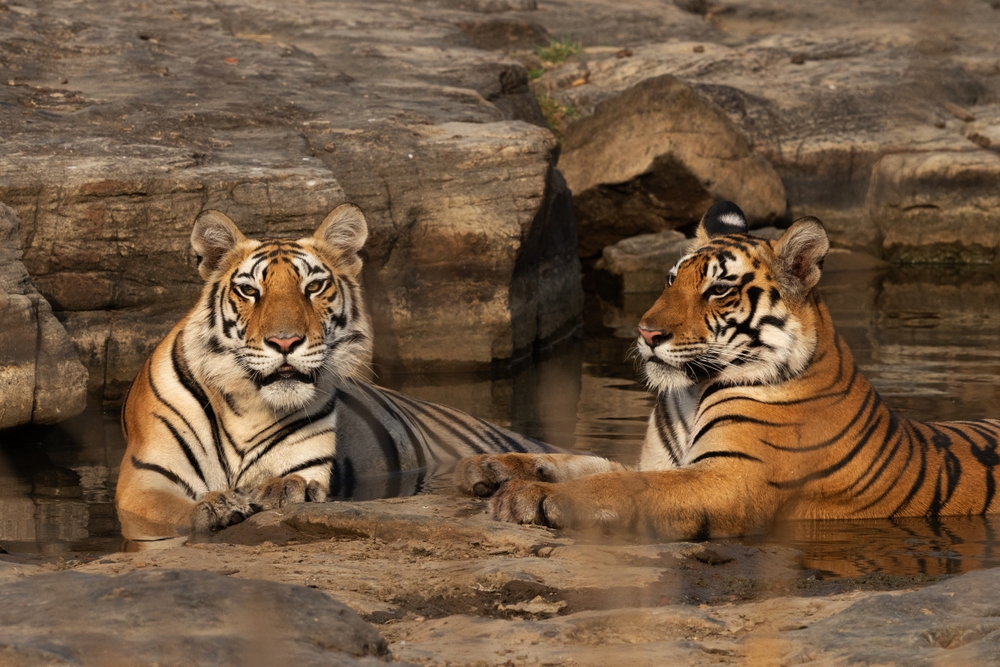
Madhya Pradesh has cemented its position as India’s undisputed “Tiger State”. Home to a staggering 785 tigers – the highest number in the country according to the 2022 census – this central Indian state offers unparalleled opportunities for wildlife enthusiasts to witness these majestic creatures in their natural habitat.
The Madhya Pradesh Tourism Board is introducing a range of tourism activities, including vehicle safaris, nature walks, jungle safaris, treehouse stays, village tours, and stargazing to enhance the visitor experience. The board is conducting workshops across different national parks to ensure a seamless and exciting journey.
Principal Secretary of Tourism and Culture and Managing Director Madhya Pradesh Tourism board Shri Sheo Shekhar Shukla said Madhya Pradesh is committed to responsible tourism and is focussing at the importance of minimizing environmental impact and involving local communities. By collaborating with forest departments, local authorities, and tourism operators, Madhya Pradesh aims to sustain tourism activities even during the park closures (July to September) and generate employment opportunities for local residents.
Here’s a glimpse into all 7 awe-inspiring tiger reserves of Madhya Pradesh:
Bandhavgarh National Park: Boasts a thriving 104 tiger population
Bandhavgarh Tiger Reserve spans across districts of Umaria and Katni. Encompassing an area of 1,536.93 square kilometres, the reserve boasts a thriving tiger population of 104 tigers. Bandhavgarh is one of the smallest parks but wildlife-rich and picturesque park having the highest density of tigers in India. There are estimated to be one tiger to every 14 km which offers a thrilling opportunity to spot tigers in their natural environment. A flight from Delhi to Jabalpur takes roughly 2 hours which is followed by a 4 hour drive to the park.
Kanha National Park: A pioneer in conservation initiatives
Kanha Tiger Reserve spanning the districts of Mandla and Balaghat is proudly one of the country’s premier tiger reserves and the state’s largest national park. The reserve encompasses an area of 940 square kilometres and the tiger population is 61. Kanha undoubtedly offers an unforgettable safari experience and spotting the master of camouflage is a thrilling reward estimated with one tiger every 15 km. Interestingly the lush forests of Kanha are believed to have inspired the setting for “The Jungle Book.” Visitors can opt a flight to Jabalpur or reach the park by Balaghat Railway Station or take a bus to Kanha Gate from Balaghat.
Pench Tiger Reserve: More than just a wildlife sanctuary
Pench National Park spans across the districts of Seoni and Chhindwara. Pench National Park is renowned for its thriving tiger population of 61 tigers across an area of 1179.63 square kilometres posing a possibility of tiger tracking every 19 km. Pench Tiger Reserve is a living chapter from Rudyard Kipling’s iconic tale, “The Jungle Book.” The inspiration for the fictional world of Mowgli can be traced directly back to this region.
Veerangana Durgavati Tiger Reserve: Newest reserve at Heart of Incredible India
Madhya Pradesh’s newest tiger reserve aims to conserve tigers and other wildlife within its vast expanse. The 7th protected habitat for big cats in the state is spread across Sagar, Damoh and Narsinghpur districts. Veerangana Durgavati Tiger Reserve is spread across 2339 square kilometres and is estimated to have 15 tigers making it a vital habitat for the endangered species. The Tiger reserve is located approximately 20 kilometers from Bhopal.
Satpura Tiger Reserve: Spot at UNESCO’s tentative list of World Heritage Sites
The Satpura Tiger Reserve stuns visitors with its exquisite natural beauty. It is aptly nicknamed as “Seven Folds,” derived from the Satpura mountain range.The reserve is estimated to have 40 tigers. The Satpura reserve also boasts ancient rock paintings dating back 10,000 years making it a memorable experience. Satpura’s ecological wealth has earned it a well-deserved spot on UNESCO’s tentative list of World Heritage Sites in the Natural category. Fly into Bhopal or Jabalpur, followed by a scenic road trip from either city to conveniently reach the Satpura Tiger Reserve.
Panna Tiger Reserve: Land of Ken River
Panna Tiger Reserve span 1,598.10 sq km spread across Panna and Chhatarpur districts. The reserve is home to 25 tigers. This reserve offers a glimpse at the dynamic dry deciduous forest. The visuals of Ken River are matchless memory during the safari with a flash of sunshine lends it unparalleled beauty. Reach Khajuraho which is the nearest Airport and the Railway station to enjoy a visit to Panna in between 15 October to 15 June for a lifetime memorable wildlife exploration.
Sanjay-Dubri National Park and Tiger Reserve: Haven for wildlife
Sanjay-Dubri Tiger Reserve comprising an Evergreen Sal, Bamboo and mixed forest span an impressive 1,674.5 square kilometers across Sidhi and Shahdol districts is a haven for wildlife. The reserve plays a crucial role in tiger conservation is home to about 5 tigers, 152 species of birds 32 species of mammals, 11 species of reptiles, 03 species of amphibian and many more, 34 species of fresh water fishes. Sanjay National Park which is a part of Sanjay-Dubri Tiger Reserve is the most popular place to visit.
Planning Your Tiger Safari: The best time to visit the tiger reserves is generally between October and June.


Comments are closed.